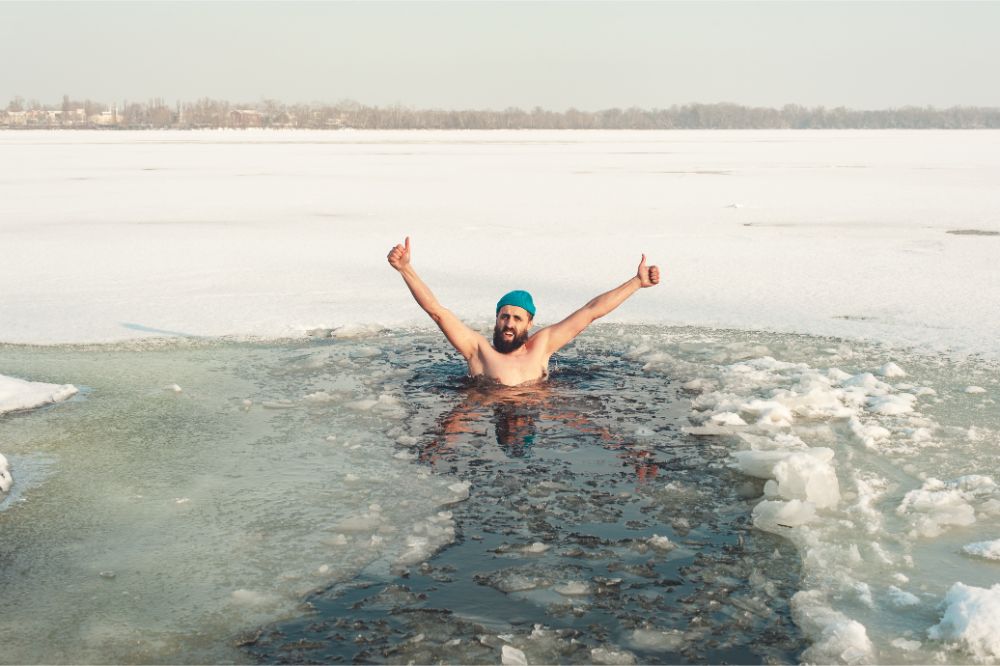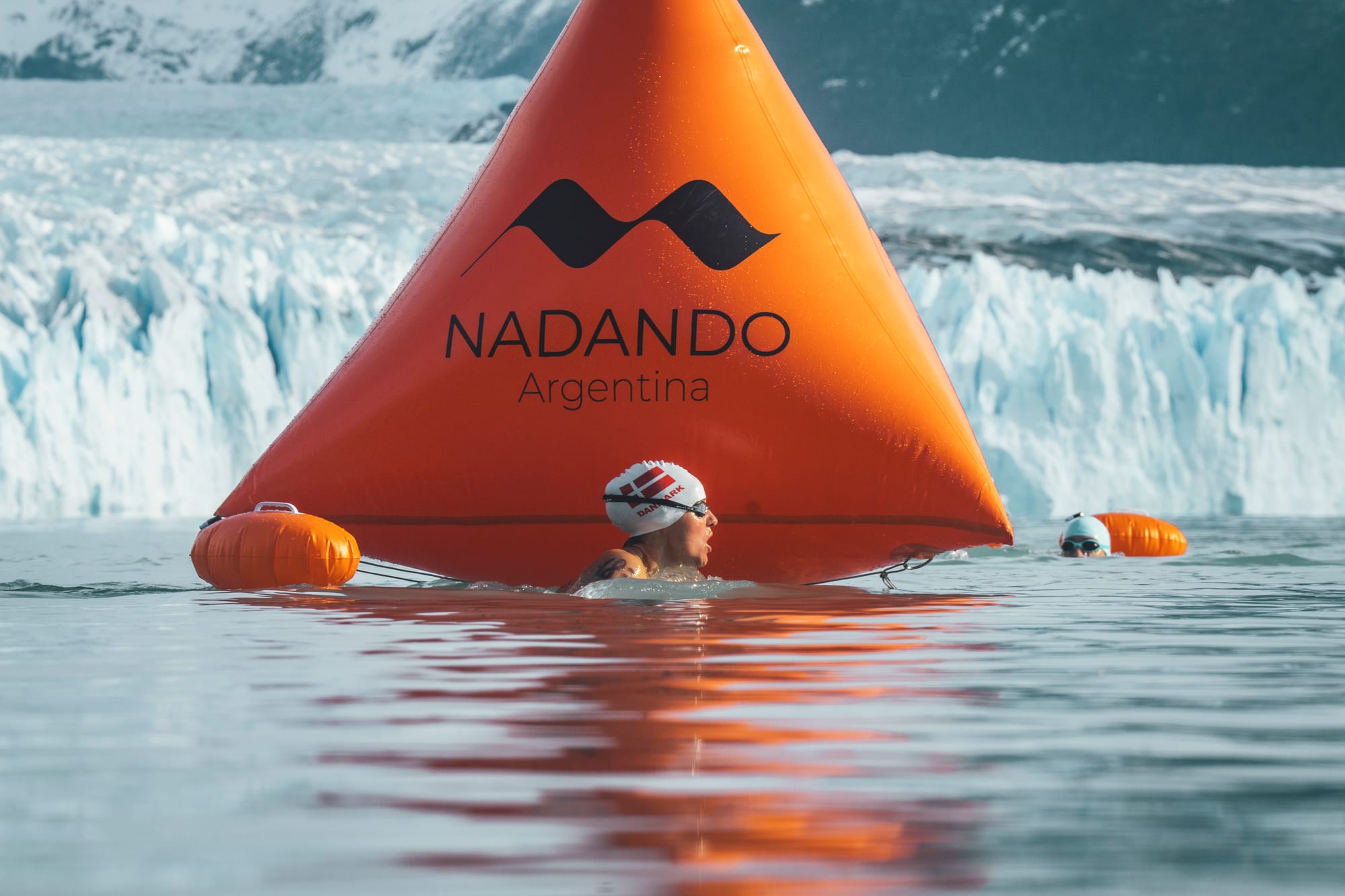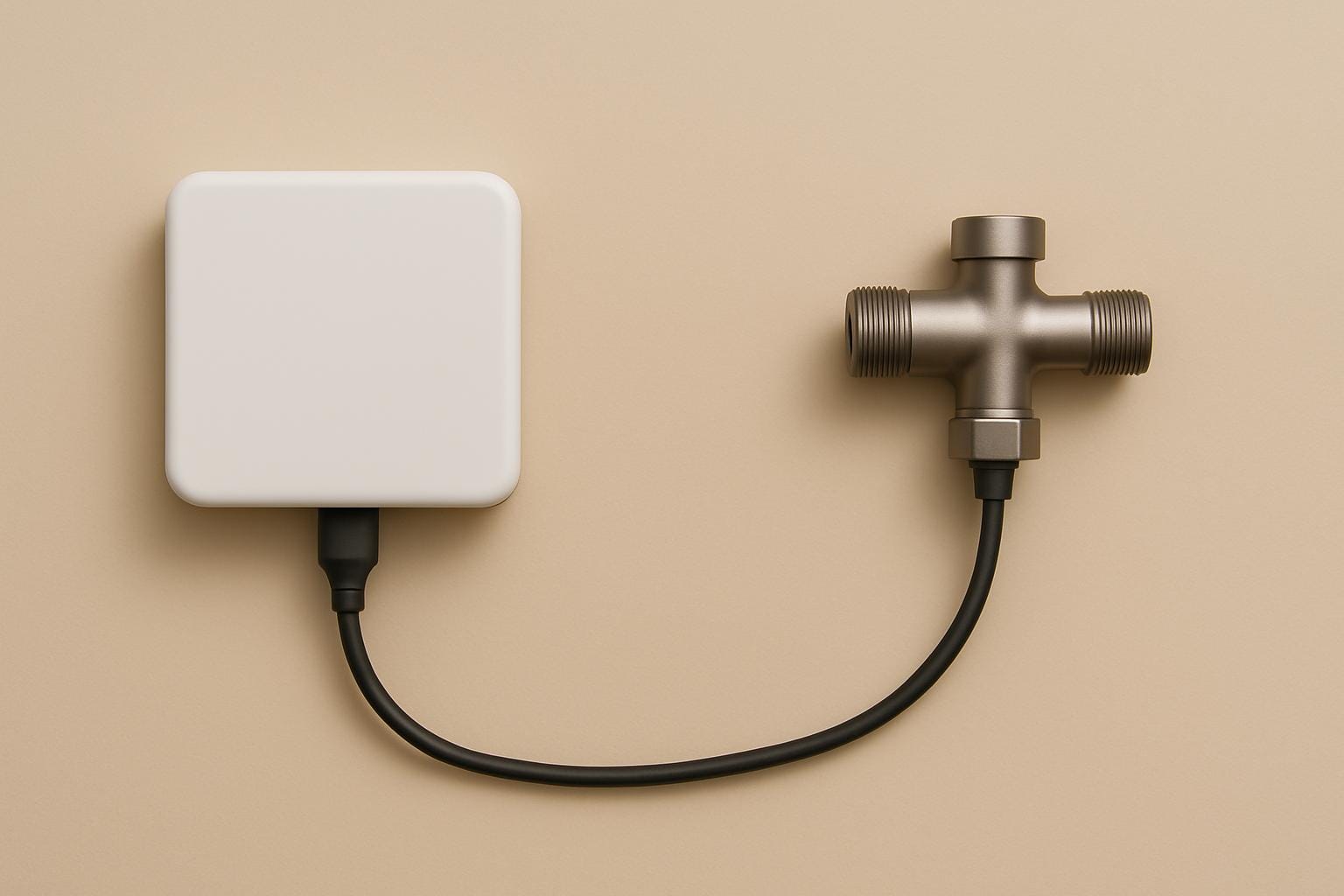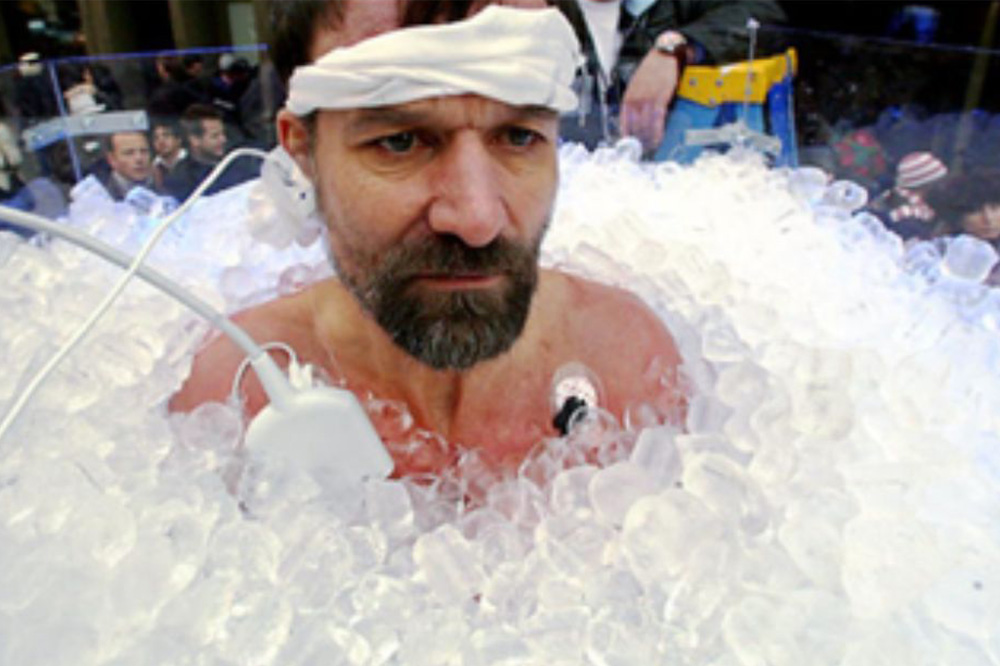Increasingly more people are interested in the physiological effects of training in the cold. People who follow the Wim Hof Method may be interested in tapping into the benefits of not only cold water training but overall cold-weather exercise and activities, like winter jogging. However, some medical professionals warn of the risks associated with endurance training in the cold. So what’s the truth: is endurance training in the cold good for you?
How Cold is Cold?
One key benefit of training in the cold is optimizing the amount of energy your body naturally spends on regulating your temperature. Working out in hot environments puts more stress on the body as it uses sweat and respiration to dissipate excess heat. Working out in cold temperatures reduces this extra strain on the body, but how cold is cold?
Depending on the climate you are used to, “cold” can mean very different things. And “cold” also varies depending on the type of sport you do and the clothing you wear. Swimming in the ice in only swim wear is quite different from jogging at the same temperature.
Let’s look at an example: athletes who compete in extreme winter sports may need to perform at temperatures as low as -20°C/-4°F. While individual tolerances vary, studies indicate that optimal endurance for the average healthy person is achieved at 10.5°C/51°F. However, healthy people may be able to exercise at temperatures as low as -11°C/12°F with no ill effects. Think of colder days on the ski slope. We wouldn’t recommend any kind of endurance training, though, in these temperatures.
Experts advise that people take extra precautions when training in temperatures below 4°C/40°F, especially if you are new to cold-weather exercise.
Benefits of Training in the Cold
Because temperature regulation is essential to life, it constantly engages all of our body’s systems—from the respiratory and cardiovascular systems to metabolism, skin, sweat, and fluids. Cold affects all our body’s systems, causing a wide range of effects. Here are some of the benefits of training in the cold.
Increases VO2 Max
VO2 max measures the maximum amount of oxygen a person can use during exercise. The more oxygen a person can use during training, the more energy their body can produce. Therefore, VO2 max is an excellent indicator of cardiovascular fitness and aerobic endurance.
While the science is not yet conclusive, a small study indicated that VO2 max increases during exercise and during the first 10 minutes of rest at cold temperatures of 5°C/41°F. However, these benefits are eliminated at extremely cold temperatures of -20°C/-4°F.
Improves Physical Endurance
Training in the cold reduces the need for the body to cool itself with the cardiovascular system, freeing up more energy for physical activity. Multiple studies referenced above show that exercise endurance is increased at temperatures of 10.5°C/51°F to 5°C/41°F. However, there is no endurance gain when training at extremely low temperatures of -20°C/-4°F.
Boosts Metabolism
Metabolism is an incredibly complex subject, and metabolic response varies dramatically from one individual to the next. Cold weather may affect metabolism by increasing the secretion of catecholamines and increased sensitivity in catecholamine receptors, changes in glucose and insulin levels; and cold-induced secretion of ketones.
Ambient temperature is also a critical factor: shivering dramatically affects metabolism and other body systems. Studies indicate that exposure to cold temperatures below the shivering threshold increase metabolism, but the effects are so idiosyncratic that it is difficult to study over large populations.
Improves Body Fat
There are two types of human adipose tissue: “white” fat, which stores excess energy, and “brown” fat, which breaks down glucose and fat to create heat. Cold exposure triggers the activation of this brown fat, the “healthy” fat that improves metabolism and cardiovascular health.
Multiple studies have shown the correlation between cold training and increased brown fat in rats, but we are only recently extending these studies to humans. However, a preliminary study indicates that cold temperatures activate brown fat and the function of skeletal muscles.
Improves Mood and Subjective Sense of Well-Being
One of the many subjective benefits of cold exposure is that people often report an improved mood and sense of well-being. This is most studied in the case of cold water and swimming, where cold water exposure is strongly correlated with enhanced mood.
Many people who train in the cold also report reduced pain and inflammation from existing health conditions like arthritis and fibromyalgia. However, people with health conditions should take extra precautions when beginning a cold training regimen.
Are There Any Risks of Training in the Cold?
There are several risks of training in extremely cold environments and few scientific benefits. Extended training in below-freezing temperatures is associated with exercise-induced asthma and respiratory effects and has not yet been proven to have many health benefits.
In addition, people who want to practice training in the cold should acclimate themselves over time, gradually building endurance while incrementally reducing the temperature rather than starting with the extreme cold.
Is Endurance Training in the Cold Good for You?
Training in low temperatures of 10.5°C/51°F to 5°C/41°F has a wide range of health benefits, with a shallow risk of harm or ill effects. Training at temperatures below freezing should be undertaken gradually and with care, especially for people with health concerns and respiratory conditions.
Over time, the body acclimates to cold training and builds tolerance, making cold conditioning safer and easier. Most people report positive effects after just two to four weeks of training in the cold.
Conclusion
More and more people are learning about the physical and mental health benefits of training in the cold and finding new ways to expose their bodies to lower temperatures. However, you can gain these benefits without training at extremely low temperatures.
When acclimating yourself to cold training, take extra precautions at temperatures below 4°C/40°F, and be attentive to your body’s responses to protect yourself. Being consistent and building tolerance over time has many great rewards for people of all fitness and ability levels.
Disclaimer: You should see a doctor prior to starting with cold training and research the risks involved.











Discussion